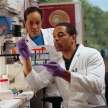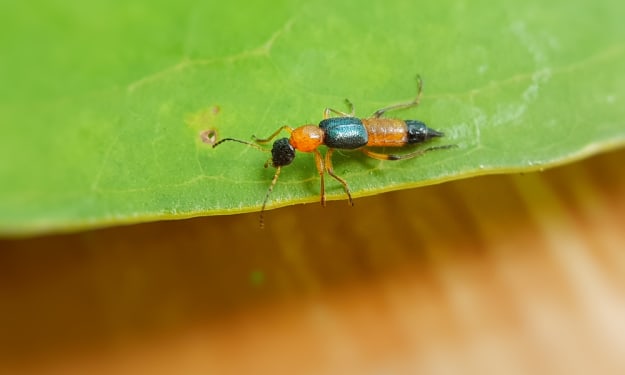Turtles become scientists' nightmares, why? The ultimate bug of evolution
Turtles become scientists' nightmares

In 1859, a book with far-reaching influence on the biological world was published, which not only laid the foundation for the study of biology, but also seriously shook the theological rule at that time. This book is "The Origin of Species".
In this book, Darwin discusses the theory of biological evolution in detail, challenging the religious creation theory, he believes that all living things are not like this in the beginning, but as the environment changes, for the better. Survive, it has gradually evolved into what it is today.
The theory of "biological evolution" can be said to have created modern biology, and has had a profound impact on genetics, molecular research, geological research and other disciplines.
Today, with the deepening of biological research, scientists are still advancing in the direction of biological evolution proposed by Darwin two hundred years ago, and have gained a lot on this road. They have a deeper understanding of life on earth and gradually mastered the The evolution process of the existing organisms in the world has brought those organisms that have disappeared in the evolutionary history to the light of day, allowing people to have a better understanding of the ancient life on the earth.
However, this road has not always been smooth sailing. There are many strange things in the world. There are always some creatures that give biologists a headache. For example, the turtle, which is jokingly called an evolutionary bug by netizens, has become a nightmare for scientists. Why do turtles make scientists like this? What about baldness? Let's go into detail.
birth of life
As an important planet in the solar system, the earth did not have life on it at the beginning of its birth, but 4.5 billion years ago, with a comet visiting the earth, the earth began a long road of life evolution. It can be said that This comet opened the door to life on Earth.
A long time of 100 million years has passed, and the original mononuclear organisms evolved into a higher level of life-single-celled organisms, followed by a long evolution, and finally at 2.7 billion years, eukaryotic life appeared, and The carnival of life has only just begun. 500 million years ago, life on earth ushered in a development frenzy, known as the explosion of life. The creatures in this period were all kinds of strange and strange, and they all looked like, making people suspect those strange-looking creatures in the Chinese "Shan Hai Jing". Animals are not described according to the biological appearance of this period.
It was not until the Triassic mass extinction that this carnival of life could be contained. After this time of life development and reproduction, the earth finally ceased to be silent, but gradually became lively. With the development and progress of geological survey technology and archaeological technology, biologists have a deeper and deeper understanding of that distant era, which has further explained the evolution of life on earth today.
It's just that in this process, the turtle is an exception. Every time scientists feel that they have found real and reliable evidence to prove the evolution of turtles, but each time the hypothesis is overturned. Turtles are amphibians of the tortoise family, mainly living in waters such as rivers, seas and lakes, and are omnivores. When we mention turtles, the first thing that comes to our mind is the long lifespan, slow speed, and behavior of the turtles directly retracting their limbs and heads into their shells when they are in danger. And it is this turtle shell that has become a mystery that the biological community has not solved so far. What is going on?
Inexplicable bug - turtle shell
First of all, let's talk about the turtle shell. I believe many people don't know what the turtle shell looks like. The shell on the snail's back is just a shell that is connected to the body, not a part of the body's skeleton. Unlike the shell on the snail's back, the turtle's shell is actually a turtle's skeleton, which is formed by closing the ribs and ribcage. A layer of hard armor, which can be found if the dissection is performed, and the internal organs of the turtle can be seen after the shell is removed. Among various crustaceans, most of their shells are composed of cuticles, and a few are evolved carapaces, such as pangolins, but among these crustaceans, such as turtles, whose carapaces are composed of bones, has really not been seen. Pass.
Generally speaking, important parts of the body like bones should be protected, how can they grow outside the body? It is as if the heart does not grow in the chest cavity, but grows outside the body. Can it survive? This situation of turtles obviously violates the common sense of biological survival and reproduction. Scientists are also puzzled by this, hoping to find answers from those ancient fossils. Starting from Darwin's theory of evolution, the evolution of biological forms is inseparable from the environment, that is to say, it must be due to environmental factors that the ancestors of turtles chose this incredible evolutionary method.
Scientists initially speculated that turtles have carapaces for defense and to prevent those hunters from hurting themselves, but this speculation is obviously untenable, because turtles pay the price of speed. Isn't it faster to move slowly and die? At this time, new progress has been made in paleontological fossils.
Fossil discovery
In 1887, humans discovered a peculiar fossil, which was identified as a tortoise fossil more than 200 million years ago, and scientists named it the original jaw turtle.
Because the protojawed turtle has the same shell as the current turtle, it is considered to be the ancestor of the modern turtle. This discovery allowed scientists to determine one thing, tortoises had tortoise shells a long time ago, so they set their sights on Serratosaurus. Sawtooth dragon lived 290 million years ago, a little earlier than the Proto-jawed turtle. It walks in a similar way to a turtle, and also has stacked armors on its back. Scientists believe that the Proto-jawed turtle evolved from the Sawtooth dragon.
But this conclusion did not last long. In 2008, another turtle fossil, the half-cartodon, appeared in Guizhou, my country, which appeared about 10 million years earlier than the original jaw turtle, and its appearance looks like a half-evolved tortoise. What surprised scientists even more was that its tortoise shell grew on its abdomen. Scientists can only give up the original idea and think that the half-cartodont has evolved into the protojaw turtle.
Soon an even more ancient turtle fossil, the Zhengnan turtle, was discovered. The Zhengnan turtle lived about 280 million years ago, which is older than the half-cartoothed turtle. It has not evolved a turtle shell. Later, a fossil called the ancestral turtle was discovered in Germany, which existed later than the Zhengnan turtle. And the abdomen has a tendency to evolve into a plastron. So an evolutionary chain was proposed by scientists, from the southern tortoise to the ancestral tortoise, then to the half-cartoothed tortoise, then to the proto-jawed tortoise, and finally to today's tortoise, as if this is the final answer.
However, the latest findings in molecular biology directly overturn this conclusion. By analyzing and comparing the genetic maps of all reptiles, molecular biologists pointed out that turtles, birds and crocodiles are very closely related, and they should have a common ancestor— - A double-porous reptile, while the southern tortoise is a nonporous creature. In the distant 280 million years ago, that is, the era when the tortoise lived, these three types of animals had not evolved separately. That is to say, at that time, the real ancestor of the tortoise should have the characteristics of birds and crocodiles. It conflicted with the existence of the Zhengnan turtle, and scientists could only overthrow the original hypothesis.
Just when scientists were arguing about what the ancestors of tortoises were 280 million years ago, a new turtle fossil appeared in China, the proto-beaked turtle, which lived 228 million years ago, which is the ancestor of the tortoise. During the period between the tortoise and the half carapace, it was amazing that it had no tortoise shell. Whether it is a half-tortoise or an ancestral tortoise, the ancestral tortoise will evolve into a tortoise shell, and then evolve back into a proto-beaked tortoise halfway through? In the end, the belly tortoise shell evolved into a half-tortoise?
new hypothesis
Scientists are still eagerly studying the ancestors of turtles, hoping to find a correct evolutionary route. The latest statement is the convergent evolution hypothesis, which has been generally recognized by scientists in the biological community.
Convergent evolution means that during the evolution of organisms, although there is no close blood relationship, but due to the similar environment and similar evolutionary pressures, completely different organisms will also evolve similar characteristics. Scientists believe that although the ancestors of tortoises should have the characteristics of crocodiles and birds 280 million years ago, they should not be like the southern turtle, but under the theory of convergent evolution, this can still be explained. It is understandable that the ancestors of tortoises had different appearances in the same period in order to adapt to the environment.
So is this hypothesis really the final answer? Maybe in the future, with the discovery of new turtle fossils, we will propose new hypotheses, or prove that this hypothesis is correct.
About the Creator
nally norris
Science needs fantasy, invention is expensive






Comments
There are no comments for this story
Be the first to respond and start the conversation.